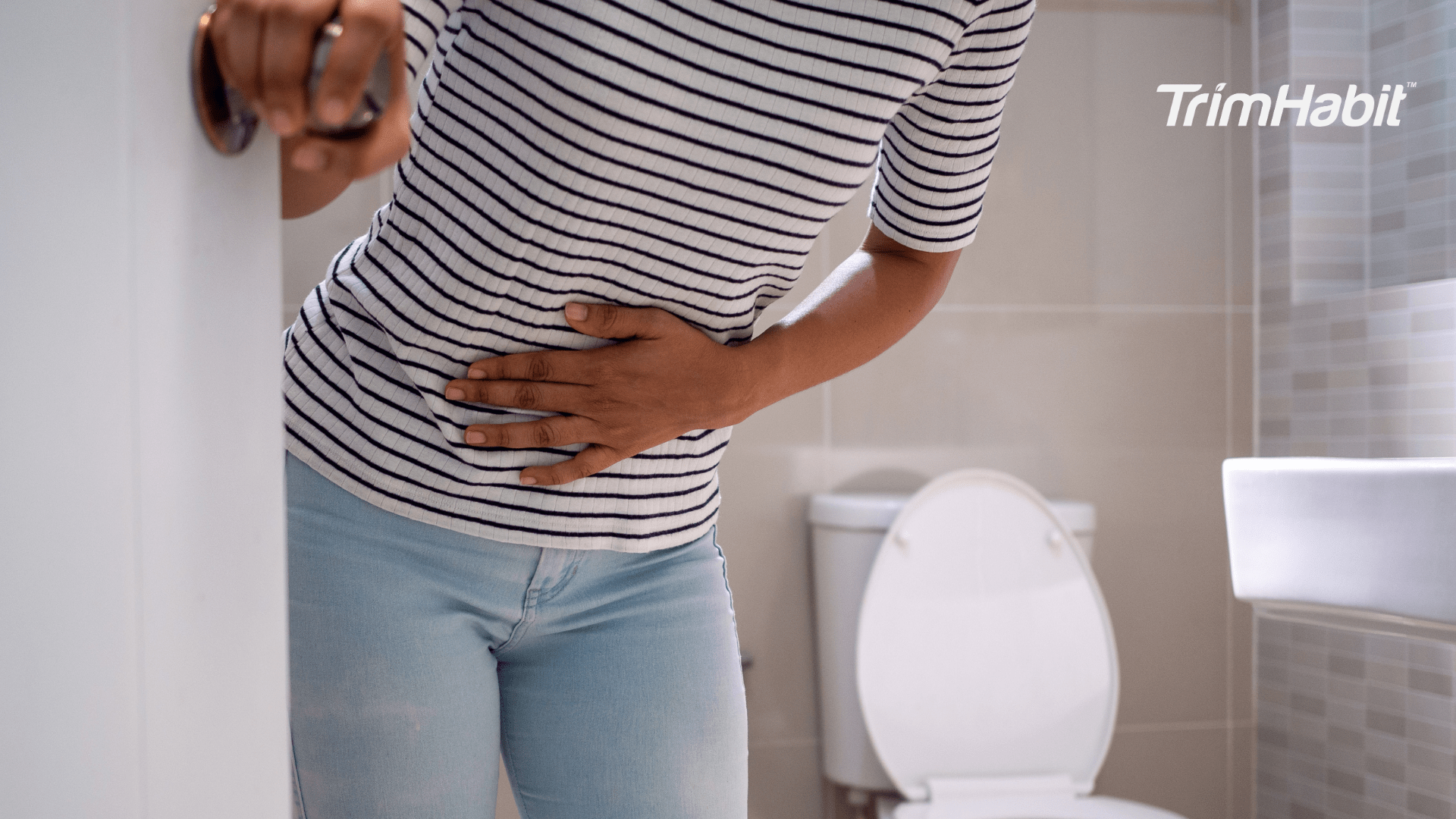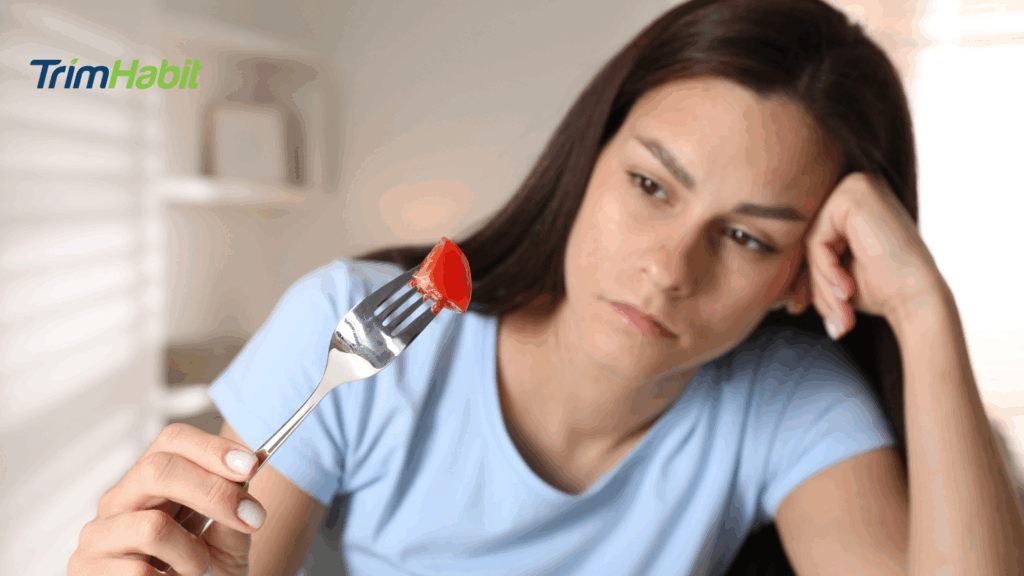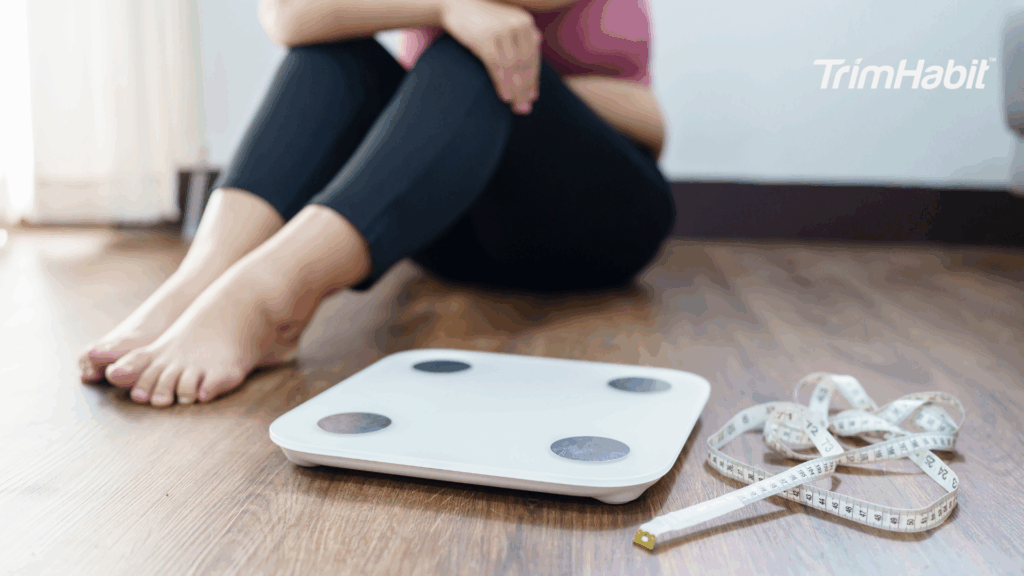When you begin semaglutide treatment, one of the first questions you may face is what to eat when you have diarrhea on semaglutide. This medication is part of a group of drugs known as GLP-1 therapies, and its active ingredient changes the way your body processes food. It slows gastric emptying, so food remains in your stomach longer, which reduces hunger and helps you eat less.
That process supports blood sugar control and encourages weight loss, but it also affects how your gastrointestinal tract functions. As food moves more slowly, your intestines react in ways that may trigger gastrointestinal adverse events like nausea, bloating, or diarrhea.
Many patients treated with semaglutide medications notice these effects most strongly in the first weeks or after a dose adjustment, though for some, they may continue intermittently. You might deal with stomach pain or unpredictable bowel movements, each of which can disrupt daily routines.
These gastrointestinal symptoms are not random or a sign of harm. They reflect how semaglutide treatment influences digestion. When prescribed semaglutide, you are often told to expect GI discomfort in the beginning, and while it may feel disruptive, the body adjusts as therapy continues. The slowing of stomach emptying that helps with appetite control also challenges your intestines until gastrointestinal tolerability improves.
This is why thinking carefully about your meals matters. Knowing what to eat when you have diarrhea on semaglutide allows you to align food choices with the way the medication works in your body, so you can manage diarrhea effectively while protecting your weight loss progress and overall health.
The Importance Of Hydration During Diarrhea
When diarrhea strikes, hydration becomes your first line of defense. Every loose bowel movement causes your body to lose water and electrolytes, which are minerals that help regulate muscle contractions, nerve function, and fluid balance. If you do not replace these losses, you risk dehydration, which can show up as fatigue, headaches, dizziness, or even more severe symptoms if it goes unchecked1,2.
Drinking plenty of water throughout the day is your foundation, but sometimes plain water alone is not enough. Oral rehydration solutions or homemade mixtures of water, salt, and a little sugar can restore the minerals you lose more effectively. Clear broths, diluted fruit juices, or coconut water can also support hydration, though you should be cautious with any beverages that contain added sugar because they can worsen diarrhea.
Imagine a scenario where you wake up feeling drained after a night of frequent bowel movements. Instead of reaching for coffee, which could irritate your gastrointestinal tract further, you sip warm broth and gradually move on to water mixed with a pinch of salt and sugar. By midmorning, you already feel less lightheaded because you prioritized hydration. These small adjustments make a big difference in how quickly your body recovers.
Staying hydrated also supports nutrient absorption because when the digestive system is flushed with fluids, it processes vitamins and minerals more efficiently. Without hydration, even eating foods rich in nutrients would not benefit you fully. Keeping a water bottle nearby and taking small, steady sips throughout the day is one of the simplest yet most powerful ways to manage diarrhea while on semaglutide.
Food Choices That Soothe The Gut
Your food choices during diarrhea can either calm your system or intensify discomfort. Gentle, bland foods are often the best foods to rely on because they place the least strain on your digestive system while still giving you energy.
Think about starting your day with plain oatmeal or brown rice, both of which provide mild starch that absorbs water in the intestines and helps firm up stool. Sweet potatoes are another excellent option, offering steady carbohydrates along with potassium, which supports electrolyte balance.
Non-starchy vegetables such as carrots, zucchini, or pumpkin, when cooked until soft, provide vitamins without overloading your fiber intake. Leafy greens may still be part of your diet, but steaming or sautéing them lightly reduces their harshness on the intestines, making them easier to tolerate.
Proteins matter as well. Lean proteins like chicken breast, turkey, or scrambled eggs give your body strength without the heaviness of high-fat foods. Fish such as cod or tilapia can also be gentle choices.
Avoid fried and greasy foods, as they can trigger more bowel movements by irritating the gut lining. Instead, focus on low-fat foods prepared by boiling, baking, or steaming.
Imagine a simple lunch of baked chicken with a side of mashed sweet potatoes and steamed zucchini. It is not only easy on your gastrointestinal tract but also nourishing enough to support recovery. As your symptoms ease, you can gradually add back whole grains such as barley or quinoa to restore long-term balance.
Structuring Meals To Reduce Strain
Meal structure plays a critical role in managing diarrhea on semaglutide. When you eat large servings, your gastrointestinal tract has to work harder, which can overwhelm stomach emptying and cause GI discomfort.
Instead, focus on smaller more frequent meals spread evenly throughout the day. Eating foods in this pattern reduces stress on your digestive system and helps maintain steady energy intake.
For example, you might start with a small bowl of oatmeal in the morning, follow with a midmorning snack of a banana or applesauce, have a light lunch of chicken and rice, enjoy a small afternoon serving of cooked carrots, and finish the day with fish and mashed sweet potatoes. Each portion is manageable, and by evening, you have eaten enough without aggravating your intestines.
It also helps to eat slowly. Chewing thoroughly signals your digestive system to release enzymes gradually, which improves nutrient absorption and lowers the risk of worsening GI symptoms.
Eating in a calm environment, rather than rushing or multitasking, makes digestion smoother. Picture sitting down with your meal plan and taking the time to notice each bite. This mindfulness helps you avoid overeating, supports gastrointestinal tolerability, and complements the effects of the treatment.
By aligning meal structure with the way semaglutide slows gastric emptying, you give yourself the best chance to manage diarrhea effectively while still meeting dietary guidelines for overall health.
Balancing Nutrition Without Aggravating Symptoms
It is natural to feel cautious about eating when diarrhea persists, but avoiding food altogether can backfire. Your body still needs a balanced diet to recover and to continue supporting your weight loss journey.
Skipping meals or relying only on refined carbohydrates might feel safe, but over time, this approach weakens your immune system and slows your weight loss progress. Instead, think of diarrhea management as a temporary adjustment where you choose foods high in nutrition but presented in a gentle way. Cooked vegetables, peeled fruits like bananas or apples, and low-fat yogurt (if tolerated) can provide valuable nutrients without overwhelming your gastrointestinal tract.
The key is moderation. Too much fiber at once can worsen diarrhea, but carefully controlled fiber intake helps restore stool consistency. Small amounts of soluble fiber from oats or applesauce are usually better tolerated than insoluble fiber from raw vegetables.
Similarly, while added sugar is best avoided, natural sweetness from ripe fruits in small portions may be acceptable once symptoms ease. By paying attention to how your body responds to certain foods, you can gradually expand your diet while maintaining gastrointestinal tolerability. Over time, eating foods with more variety will support not only digestion but also long-term successful weight loss.
Samples Of What To Eat When You Have Diarrhea On Semaglutide
Breakfast
- Plain oatmeal with banana – Cook rolled oats until soft, top with thin slices of ripe banana, and a drizzle of honey if tolerated.
- Scrambled eggs with soft toast – Two scrambled eggs cooked in a small amount of olive oil, served with plain white or brown toast.
- Cream of rice cereal – Warm, smooth cereal made with water or low-fat milk, easy on the stomach and filling.
Lunch
- Chicken and rice soup – Clear broth with shredded chicken breast, cooked carrots, and white rice.
- Turkey sandwich on soft bread – Lean turkey slices on plain soft bread with a little lettuce if tolerated.
- Baked sweet potato with cottage cheese – A soft baked sweet potato topped with a spoonful of low-fat cottage cheese.
Dinner
- Steamed white fish with mashed potatoes – Lightly seasoned fish, steamed until tender, served with plain mashed potatoes.
- Grilled chicken with well-cooked carrots and rice – Lean grilled chicken breast, soft carrots, and plain white rice.
- Soft pasta with olive oil – Plain pasta tossed lightly with olive oil, served with zucchini cooked until very tender.
Snacks
- Applesauce – Unsweetened, smooth applesauce that’s easy on the stomach.
- Plain crackers – Soft, low-fat crackers paired with mild cheese if tolerated.
- Banana slices – A ripe banana, which is gentle, starchy, and soothing during diarrhea.
Considering Other Health Conditions
Semaglutide is rarely prescribed in isolation; it often supports people with complex health needs. If you need to manage chronic kidney disease, your diet during diarrhea episodes requires special attention.
You may need to limit potassium, phosphorus, or protein depending on your stage of chronic kidney disease, even while seeking relief from GI symptoms. That means foods to eat may look different for you compared to someone without kidney challenges. Similarly, if you are living with cardiovascular disease, your healthcare provider may advise avoiding sodium-heavy broths or processed foods that could strain your heart, even if they seem soothing to your stomach.
This is where professional guidance becomes critical. A healthcare professional who understands both semaglutide treatment and your other medical conditions can help tailor a meal plan that balances all your needs.
For example, they may recommend specific lean proteins or low-sodium vegetable broths that calm diarrhea without worsening heart or kidney health. By working closely with a healthcare provider, you make food choices that are safe and effective across all aspects of your health.
Supporting Long-Term Weight Management
Diarrhea may feel like a setback, but it does not mean your efforts are wasted. Weight loss progress depends on consistency and patience rather than perfection. If you continue with physical activity that feels safe, maintain hydration, and stick with smaller more frequent meals, you support your weight loss journey despite temporary discomfort.
Remember that GI symptoms are common during semaglutide use, but the body adjusts with time. Most people notice that bowel movements stabilize after several weeks, especially when they stay mindful of food choices.
It helps to think long-term. Losing weight is not only about the number on the scale but also about creating habits that support health in sustainable ways.
Each time you manage diarrhea successfully, you build confidence in your ability to stay on track. Over time, these skills become part of your routine, helping you achieve successful weight loss while protecting your digestive system. The fact that you can manage gastrointestinal adverse events while continuing semaglutide treatment demonstrates resilience and commitment.
Other Side Effects To Expect
Diarrhea may be one of the more noticeable digestive changes, but semaglutide can cause other side effects as well. Some people experience nausea, constipation, or a feeling of fullness that lasts longer than expected after meals.
Others report fatigue, mild dizziness, or a reduced appetite that can make it harder to maintain regular eating habits. These reactions often appear in the first few weeks of treatment or after a dosage increase, and they usually improve with time as your body becomes more accustomed to the medication.
Most side effects are temporary and mild, though they can still disrupt daily routines if you are not prepared for them. Knowing that they are possible helps you stay calm and focus on simple strategies like adjusting meal size, drinking enough fluids, and monitoring your comfort level. If symptoms become severe, persistent, or interfere with your quality of life, it is important to discuss them with your healthcare provider so your treatment plan can be adjusted safely.
Conclusion
Diarrhea during semaglutide treatment is uncomfortable, but it is manageable with steady habits and thoughtful food choices.
Lean proteins, brown rice, non-starchy vegetables, and sweet potatoes can keep you nourished without straining your gastrointestinal tract, while avoiding greasy foods, fried foods, high-fat foods, and spicy foods, which can prevent irritation. Eating smaller more frequent meals, drinking plenty of fluids, and pacing yourself at the table helps your body adjust while protecting nutrient absorption.
These steps may seem simple, yet they give you the stability you need to manage diarrhea without losing focus on your weight loss journey. With time, your digestive system becomes more tolerant, and with support from a healthcare provider, you can keep progressing toward successful weight loss while staying in control of your health.









